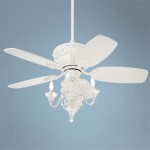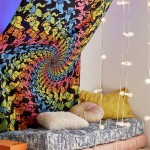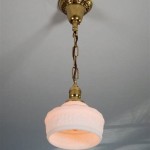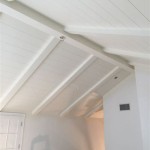Cathedral Ceiling Living Room Decor Ideas: 2024 Styles and Designs
Cathedral ceilings, characterized by their soaring heights and often angled planes, present both opportunities and challenges in interior design. These architectural features can create a sense of spaciousness and grandeur, but effectively decorating a living room with a cathedral ceiling requires careful consideration of proportion, lighting, and overall aesthetic balance. In 2024, several key design trends are emerging for cathedral ceiling living rooms, focusing on maximizing the impact of the high ceilings while maintaining a comfortable and inviting atmosphere.
One prevalent trend is the emphasis on verticality. To complement the height of the ceiling, designers are utilizing tall, statement-making elements like floor-to-ceiling bookshelves, large-scale artwork, and elongated light fixtures. This approach helps to draw the eye upward, accentuating the architectural features and preventing the space from feeling disproportionate.
Another significant trend involves the strategic use of color and texture. Walls are often painted in lighter shades to enhance the feeling of openness, while accent walls or textured finishes are employed to add visual interest and depth. The integration of natural elements, such as wood beams or stone fireplaces, continues to be a popular choice, providing a sense of grounding and warmth to the expansive space.
Lighting plays a crucial role in cathedral ceiling living rooms. Given the high ceilings, a combination of ambient, task, and accent lighting is essential. Chandeliers, pendant lights, and recessed lighting are frequently used to provide overall illumination, while floor lamps and table lamps offer localized lighting for specific tasks and activities. Smart lighting systems are also gaining traction, allowing homeowners to easily adjust the lighting levels and create different moods throughout the day.
Maximizing Vertical Space
The primary challenge in decorating a cathedral ceiling living room is addressing the vertical space effectively. Leaving the walls bare can make the room feel cold and impersonal. Therefore, incorporating design elements that draw the eye upward is paramount. This can be achieved through several strategies:
Floor-to-Ceiling Elements: Introducing floor-to-ceiling bookshelves is an excellent way to fill the vertical space and add a sense of sophistication. These bookshelves can house a collection of books, decorative objects, and artwork. Alternatively, consider a floor-to-ceiling fireplace with a unique surround material, such as stone or reclaimed wood. The fireplace not only serves as a focal point but also anchors the room and provides warmth.
Large-Scale Artwork: Oversized artwork is another effective way to utilize vertical space. Choose pieces that are visually striking and complement the overall color scheme of the room. A single, large canvas or a gallery wall consisting of several smaller pieces can achieve the desired effect. Consider the scale of the artwork in relation to the size of the wall and the height of the ceiling.
Statement Lighting: Lighting fixtures play a dual role in cathedral ceiling living rooms: providing illumination and serving as decorative elements. Choose chandeliers or pendant lights that are appropriately sized for the space. A chandelier that is too small will be dwarfed by the high ceiling, while one that is too large can overwhelm the room. Consider the style of the lighting fixture in relation to the overall design aesthetic. A modern chandelier with clean lines can complement a contemporary living room, while a more ornate chandelier can enhance a traditional space.
Curtains and Drapes: Utilize long curtains or drapes to add softness and visual interest to the walls. Hanging the curtains from near the ceiling will elongate the walls and create a more dramatic effect. Choose fabrics that are appropriate for the style of the room. Linen or cotton curtains can create a relaxed, casual atmosphere, while silk or velvet curtains can add a touch of luxury.
Color and Texture Strategies
The choice of color and texture can significantly impact the overall feel of a cathedral ceiling living room. Lighter colors tend to enhance the sense of spaciousness, while darker colors can create a more intimate and cozy atmosphere. Texture adds visual interest and depth, preventing the room from feeling flat and one-dimensional.
Light and Neutral Palettes: Opting for a light and neutral color palette is a common strategy for cathedral ceiling living rooms. Colors like white, cream, beige, and light gray reflect light and make the room feel brighter and more open. These colors also provide a versatile backdrop for furniture and accessories. Consider using different shades of the same color to create a sense of depth and dimension.
Accent Walls and Textured Finishes: Introduce an accent wall to add visual interest and break up the monotony of a single color. Choose a color that complements the overall color scheme of the room but is slightly bolder or more saturated. Alternatively, consider using a textured finish, such as wallpaper, shiplap, or exposed brick, to add depth and character to the wall.
Natural Elements: Incorporating natural elements, such as wood beams, stone fireplaces, and plants, can add warmth and texture to a cathedral ceiling living room. Wood beams can be used to accentuate the ceiling and add a rustic or farmhouse-inspired touch. A stone fireplace provides a focal point and creates a sense of grounding. Plants add life and freshness to the space.
Textural Fabrics and Upholstery: Choose fabrics and upholstery with interesting textures to add depth and visual interest to the room. Consider using materials like velvet, linen, leather, and wool. Mix and match different textures to create a layered and inviting atmosphere. Use textured throw pillows, blankets, and rugs to add softness and comfort to the space.
Effective Lighting Solutions
Given the height of cathedral ceilings, proper lighting is crucial for creating a well-lit and inviting living room. A combination of ambient, task, and accent lighting is necessary to ensure that the space is adequately illuminated and visually appealing.
Ambient Lighting: Ambient lighting provides overall illumination for the room. Chandeliers, pendant lights, and recessed lighting are commonly used to provide ambient lighting in cathedral ceiling living rooms. Choose lighting fixtures that are appropriately sized for the space and provide sufficient light. Consider using dimmer switches to adjust the lighting levels and create different moods.
Task Lighting: Task lighting provides focused light for specific activities, such as reading or working. Floor lamps and table lamps are commonly used to provide task lighting in living rooms. Place task lighting near seating areas or workspaces to provide adequate illumination for these activities. Choose lamps that are adjustable so that the light can be directed where it is needed.
Accent Lighting: Accent lighting highlights specific features in the room, such as artwork or architectural details. Track lighting, spotlights, and wall sconces are commonly used to provide accent lighting in cathedral ceiling living rooms. Position accent lighting to emphasize the features that you want to highlight. Consider using colored light bulbs to create different moods and effects.
Smart Lighting Systems: Smart lighting systems are becoming increasingly popular in modern homes. These systems allow homeowners to control the lighting levels, colors, and schedules remotely. This can be particularly useful in cathedral ceiling living rooms, where adjusting the lighting can be challenging due to the height of the ceiling. Smart lighting systems can also be programmed to create different scenes for different activities, such as watching TV, reading, or entertaining guests.
In addition to these key points, careful consideration should be given to furniture selection. Scale is paramount; oversized furniture can overwhelm the space, while undersized pieces can get lost. A balance must be struck to create a cohesive and comfortable living environment. The arrangement of furniture should also encourage conversation and flow, creating a welcoming and functional space for both residents and guests. Integrating technology seamlessly is another important aspect of modern living room design. Concealed wiring, integrated sound systems, and strategically placed outlets can enhance the functionality of the space without compromising its aesthetic appeal.
By carefully considering these design principles and trends, homeowners can transform their cathedral ceiling living rooms into stunning and inviting spaces that showcase the architectural beauty of the high ceilings while providing a comfortable and functional living environment.

13 Unbeatable Vaulted Ceiling Ideas 2024 Checkatrade

Maximizing Vaulted Ceilings Living Room Wall Decor Ideas Doğtaş

Designer Approved Tips To Make The Most Of High Ceilings

Living Room Sloped Ceiling Design Ideas

90 Modern Living Room Ideas For The Ultimate Hangout Spot

Vaulted Ceilings Ideas That Take Rooms To New Heights Architectural Digest

50 Style Modern Living Room Ideas To Try In 2024

7 Ways To Decorate A Double Height Living Room Architectural Digest

90 Modern Living Room Ideas For The Ultimate Hangout Spot

75 Beautiful Living Room Ideas For Decorating Inspiration
Related Posts








